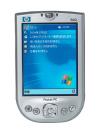The Multiple
Dimensions of Job Coaching:
Job coaching is no easy career, and the skills required are far-ranging.
At minimum, you need to be able to assess a client's preferences,
abilities, weaknesses and supports, balancing all of these characteristics
with a particular job-site's requirements, then provide the right
accommodations that help the client achieve success day-to-day at
work.
Available accommodations may include: (1) restructuring the job,
(2) modifying the work-site, (3) developing a flexible schedule,
(4) training a supervisor or peer mentor, (5) solving transportation
problems, (6) and providing onsite coaching, assistive technology, safety
training, social skills training and money management training. The
list does not stop here, and every client requires a different, individualized
set of accommodations.
What Can a PDA Help You Do?
As mentioned above, PDAs can help clients remember to perform scheduled
tasks, perform all the steps of multi-step tasks, and follow behavioral
cues for on-the-job social settings. PDAs can also help clients who
drive find their way to work or around
the work-site, remember names/faces and manage money. If you have
a client who might benefit from assistance in any of these areas,
a PDA may help.
Who is a Good Candidate?
Individuals who are most likely to benefit from using a PDA as a
cognitive aid include those who have: (1) functional vision and hearing,
(2) enough dexterity to tap a PDA screen to respond to alerts, (3)
an awareness of the need to use a device as a cognitive aid, (4)
interest in using a PDA as a cognitive aid, (5) a supervisor who
is willing to let the client use a PDA on the job, and most importantly,
(6) the ability to respond to a reminder prompt and perform the prompted
task.
Assessment Tools:
In determining whether your client has the potential to benefit
from using a PDA as a cognitive aid, you may wish to use the following checklist:
ATC Checklist
Your Role in Providing Assistive Technology for Cognition:
When using a handheld computer as a cognitive aid,
you are acting an assistive technology provider. To provide this service
effectively, you will need to: (1) learn how to use the devices,
(2) analyze client tasks with a focus on areas where a PDA may help,
(3) determine the best device for your client, (4) collaborate with
your client, supervisor and other support personnel to program the
device, (5) train the client (and a caregiver) to use the device,
(6) assist your client in learning how to use the device as a part
of her/his daily routine, (7) provide follow-up consults to make
sure the device is working properly for your client, and (8) gradually
diminish supports as your client begins to use the device independently.
Basic Set-up and Training:
If your client appears to have the potential to utilize assistive
technology for cognition on the job, a recommended first step is
to introduce a good basic device that does not have too many bells
and whistles. If the device includes computer software, you will
probably want to download it to your client's home computer yourself.
Then introduce the use of reminder alarms for daily activities. Train
your client and a family member or caregiver to troubleshoot difficulties.
Initially teach them to program in only 4-5 reminders each day for
the first week.
If using the device as a reminder system works during the first
week, you can add on more alarms, and consider using the device for
more complex tasks. You may want to utilize a task-sequencing program
such as Ablelink's Pocket Coach to program in step-by-step instructions
for job tasks, for instance. As in training your client to use reminder
alarms, you will need to program the device yourself, and provide
follow-along assistance to make sure your client can use the device
independently on the job.
Learning to use a PDA:
The only way to learn how to use a PDA is to get your hands on one, and then follow instructions as you program in reminder alarms, contact information, memos, etc. If you have never used one before, you will be surprised how easy it is to use the PDA stylus to tap in information. Links on this page provide instructions for using either a Palm PDA or a Pocket PC. Once you have signed up to participate in this research project, we will provide you with a PDA of your choice to use with your client. We recommend that you practice programming and using the PDA for a week or so before you introduce it to your client. Your PDA will include an instruction manual that can provide more detailed instructions than are provided here. Also, the research team is always available to help you troubleshoot difficulties as you learn to use the PDA.
A Research Reminder:
The reason we are conducting this research is to find out whether PDAs can help individuals with brain injury perform more independently on the job. But just as important, we want to know whether training a client to use a PDA as a job aid is worthwhile for you as a job coach. We will be asking you what you liked and disliked about the process and how much time was needed to learn to use a PDA, train your client and provide PDA-related follow-along. We will also ask your advice on how we can improve our efforts to make PDAs useful as job coaching tools. We appreciate your attention to these issues as you proceed with the project and hope you enjoy participating.
Troubleshooting Issues:
Let's look now at some common troubleshooting issues faced by PDA users.
|



